Concept design tips for artists
Create believable worlds for animation with these 15 workflow tips.
The main task of a visual development environment artist working in animation is to conceptualise, design and execute a believable world for characters to live in. But the success of these environment concepts doesn't rely solely on the drafting skill level of the artist – it's the whole package that makes the final product work effectively.
Visual development is simply the visual evolution from an idea to the final product. So it's crucial that the structural makeup of the artworks in development occur in this order: concept, design, technique. To think technique is the key to the success of the artwork is totally missing the mark.
Here are my key tips that point towards a successful process in creating strong concepts and compositions for animation.
01. Concept art = concept + art
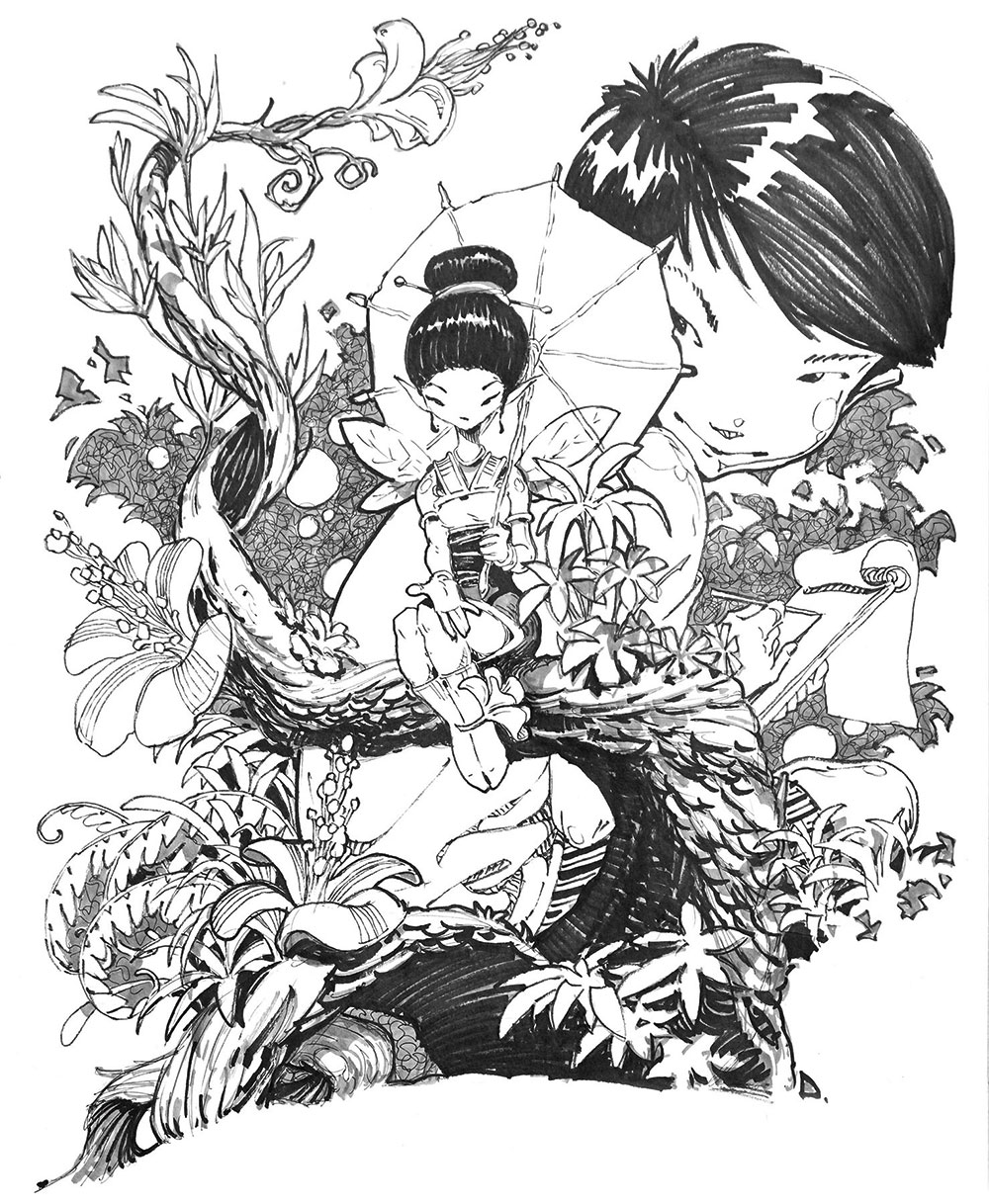
Concept art is not just about the epic, or its beautiful execution. It's artwork that grows out of a design process, well rooted in an idea that supports the story. The priority of concept can be identified thus: needs and wants. What the story needs has to be conceptualised first. The artist then provide their design wants that focus and support the story.
So in the image above, the need for this image is to design an Asian fairy and her magical environment. A second character is a design want, to exemplify the scale and dimension. The design choice of the secondary character creates a relational affinity and familiarity between the two.
02. Do dynamic research
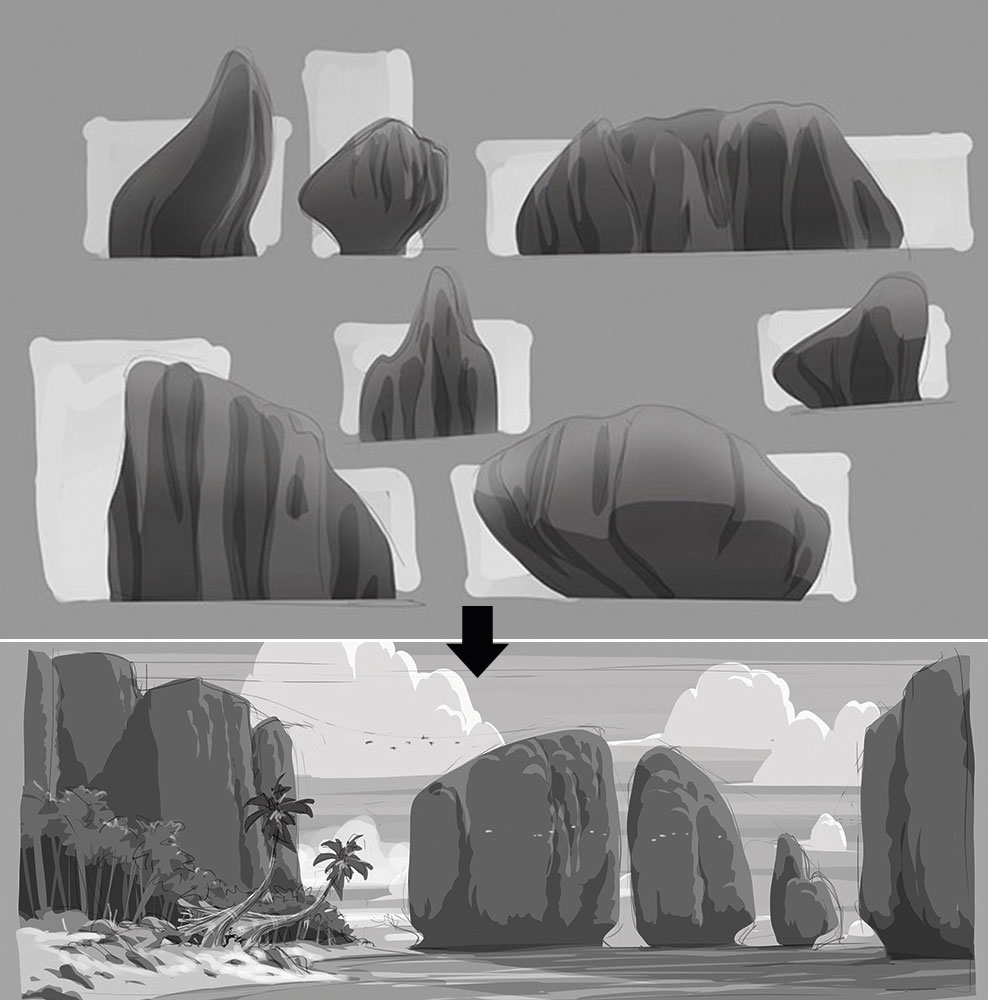
Research breeds authenticity in the design evolution, from concept to the final product. Similar to the old adage about knowing the rules first before one can break them, I have to learn what's real before I can design, or redesign, an object or environment.
Research gives a vision of functionality. What makes it dynamic is when I start sketching and creating thumbnails while doing research. This keeps me from getting bogged down in reference material. I trust my artistic instincts when I hit a design target from reference materials, and I stop looking for more and start sketching. My approach towards design improved by doing this.
Get the Creative Bloq Newsletter
Daily design news, reviews, how-tos and more, as picked by the editors.
03. Think inside the box
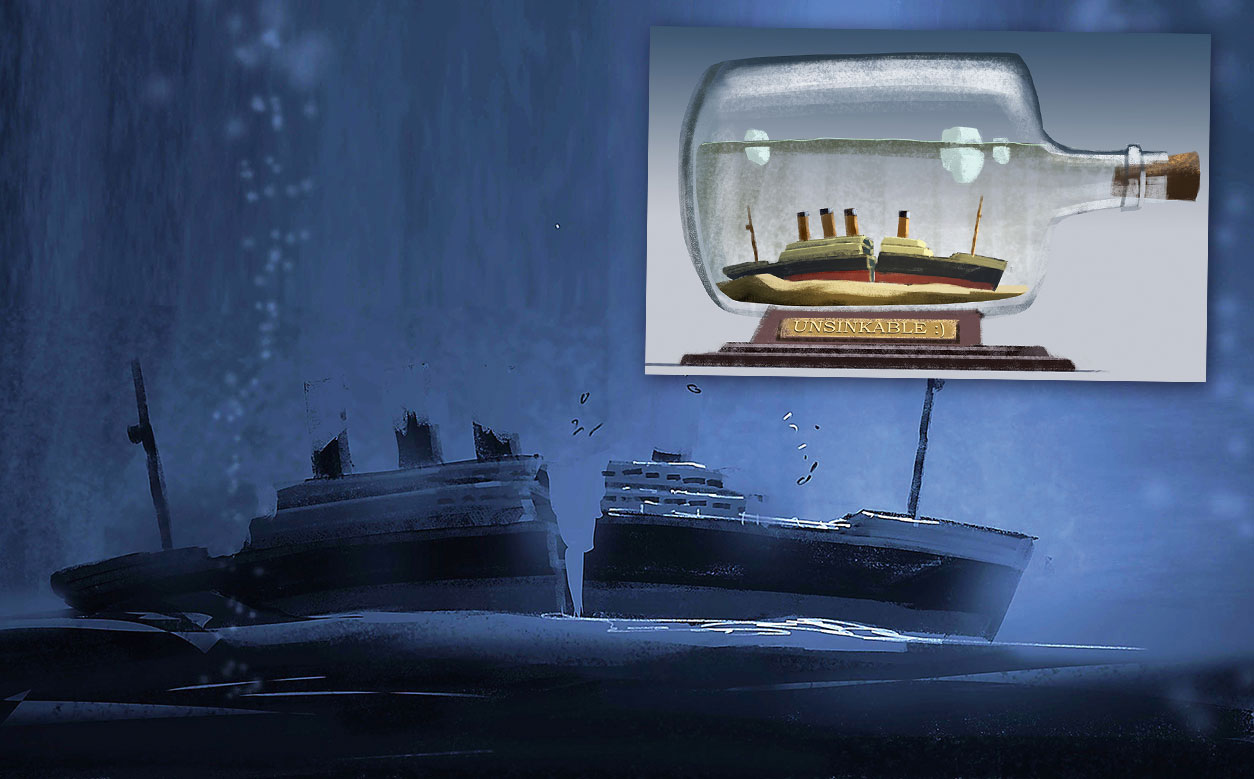
As visual development artists and concept designers, we're always told to think outside the box. But I believe this is only possible if the designer knows what's inside the box. And not only to know what's inside, but also understand how those objects inside the box work.
I've learned over the years not to go outside the box if what's inside it still works. At the end of the day, it's how the story/idea could be told more effectively that influences your design choices, not whether it's a safe or 'out there' idea.
These quick sketches give me two spring boards on retelling the story of the Titanic. The first image is the inside-the-box translation, with a literal narrative of its present underwater situation. Alternatively, I can go for the outside-the-box option by creating a juxtaposed imagery of its supposed description and its present-day situation, encapsulated in a classic ship-in-a-bottle setting.
04. Design loosely
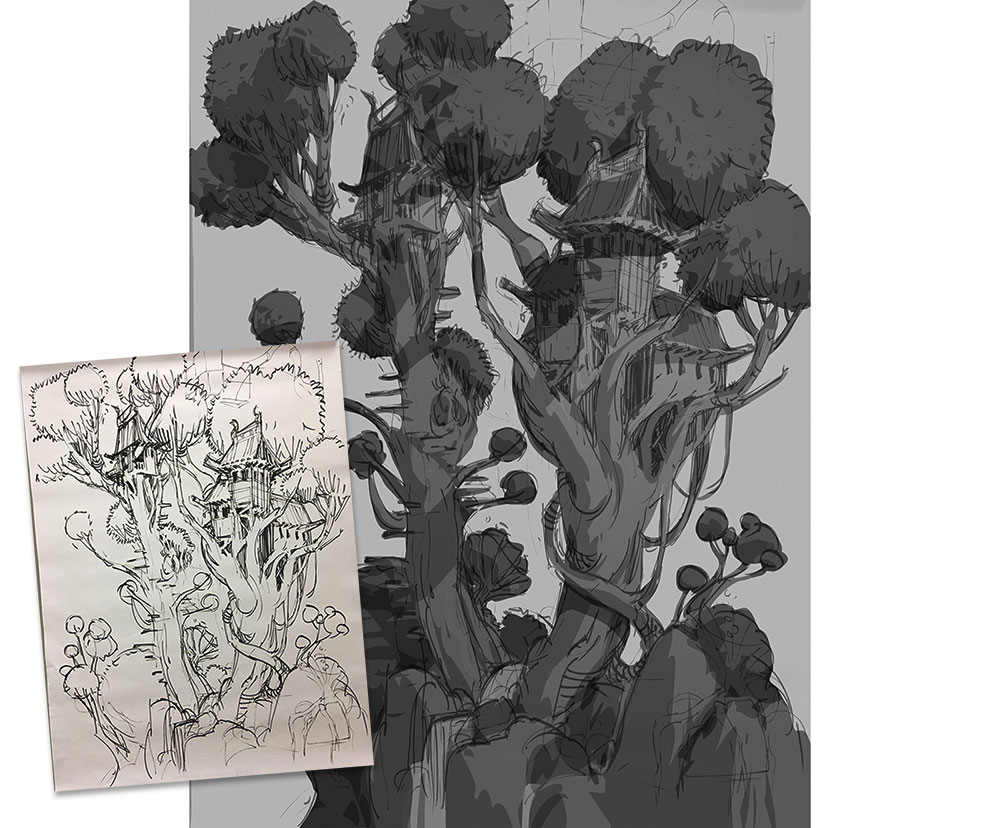
One key discipline I've learned over the years is to design with my arm and draw with my wrist. There's a dynamic balance of freedom and control in my wrist, and a dynamic balance of freedom and control in finding the right design language when the arm is moving loosely. When I become lazy and miss the arm out, the artwork tends to be static and lifeless.
These images are from a 90-minute demo process in a live workshop. The 18x24-inch canvas gave me a good amount of arm flexibility. Then I took a hi-res iPhone photo and transferred the file into Photoshop for value and colour.
05. Understand composition
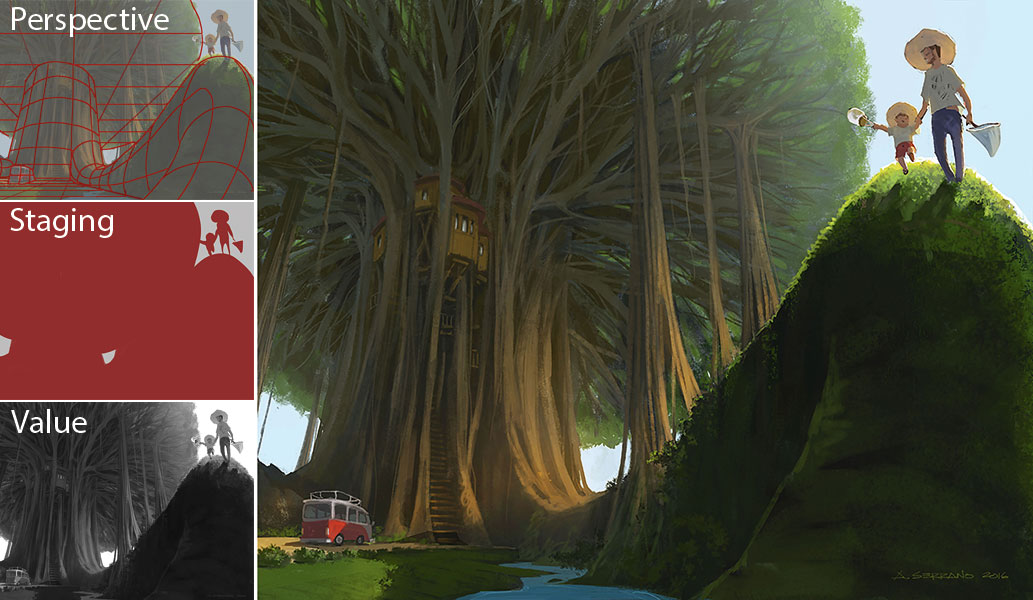
Getting to grips with composition is vital to the structural strength of design. Composition is not just a standalone term that simply describes an arrangement of forms and shapes. Instead, realise that composition is perspective, value, staging and colour arranged harmoniously, to tell the story or idea more efficiently.
Perspective is the placement of the camera and what type of lens is being used. Value translates the application of lighting. Staging is the arrangement of different elements in the canvas using the combination of shapes, sizes and overlaps, creating depth, dimension and balance. Colour is the harmony of palettes and temperatures.
06. Use perspective
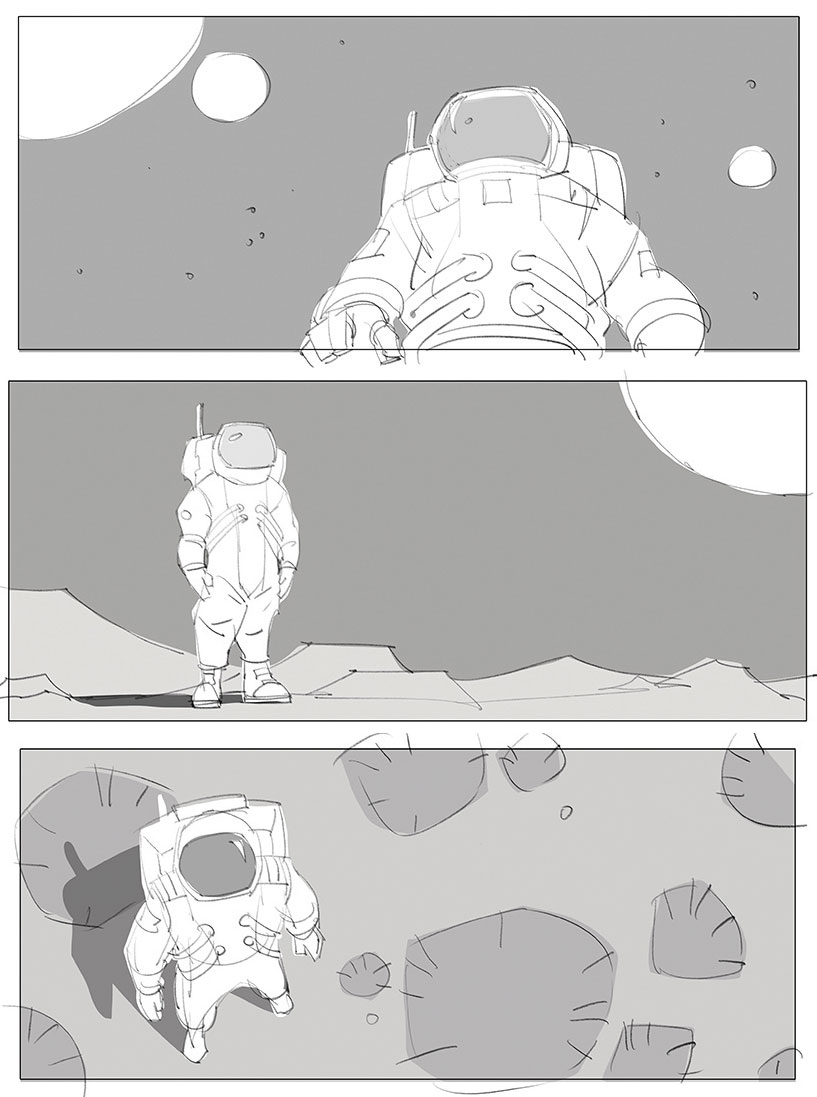
Perspective has a strong psychological effect on viewers' perception. Above, various camera placements of the same subject and environment give different viewer perceptions. The viewpoint is the audience's eyes.
07. Play with the viewer's perception
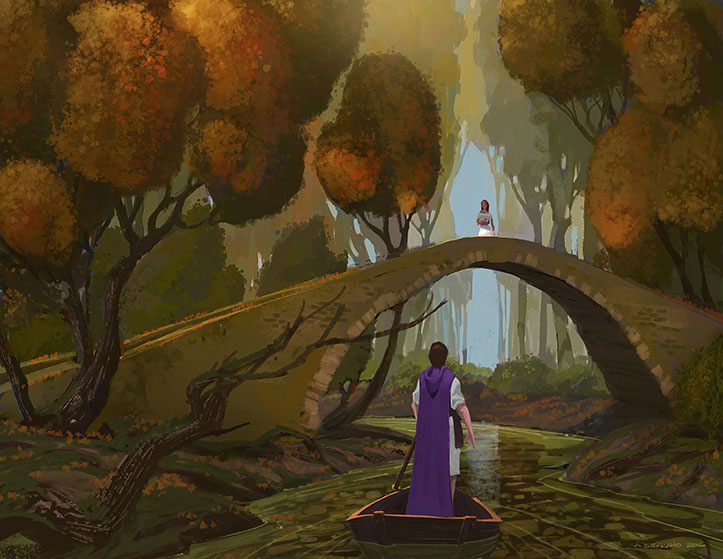
Visual aesthetics is the study of how compositional elements (value, perspective, staging and colour) interact and the audience's reactions to them. It's not enough to understand composition and expect to be effective visual storytellers. Rather, it's important to understand perception – how the audience reacts to composition.
Improper use of composition will result in an audience's selective perception. Selective perception results in selective context. And selective context means the audience will have different interpretations of the story/idea. With the proper use of visual aesthetics, the compositional choices become intentional and directional towards intended perception.
When the artist controls selective seeing, the visual message becomes subjective. Subjective means controlled perception. Controlled perception results in controlled context, and this means the audience will have a singular interpretation of the story idea.
08. Know the rules of value
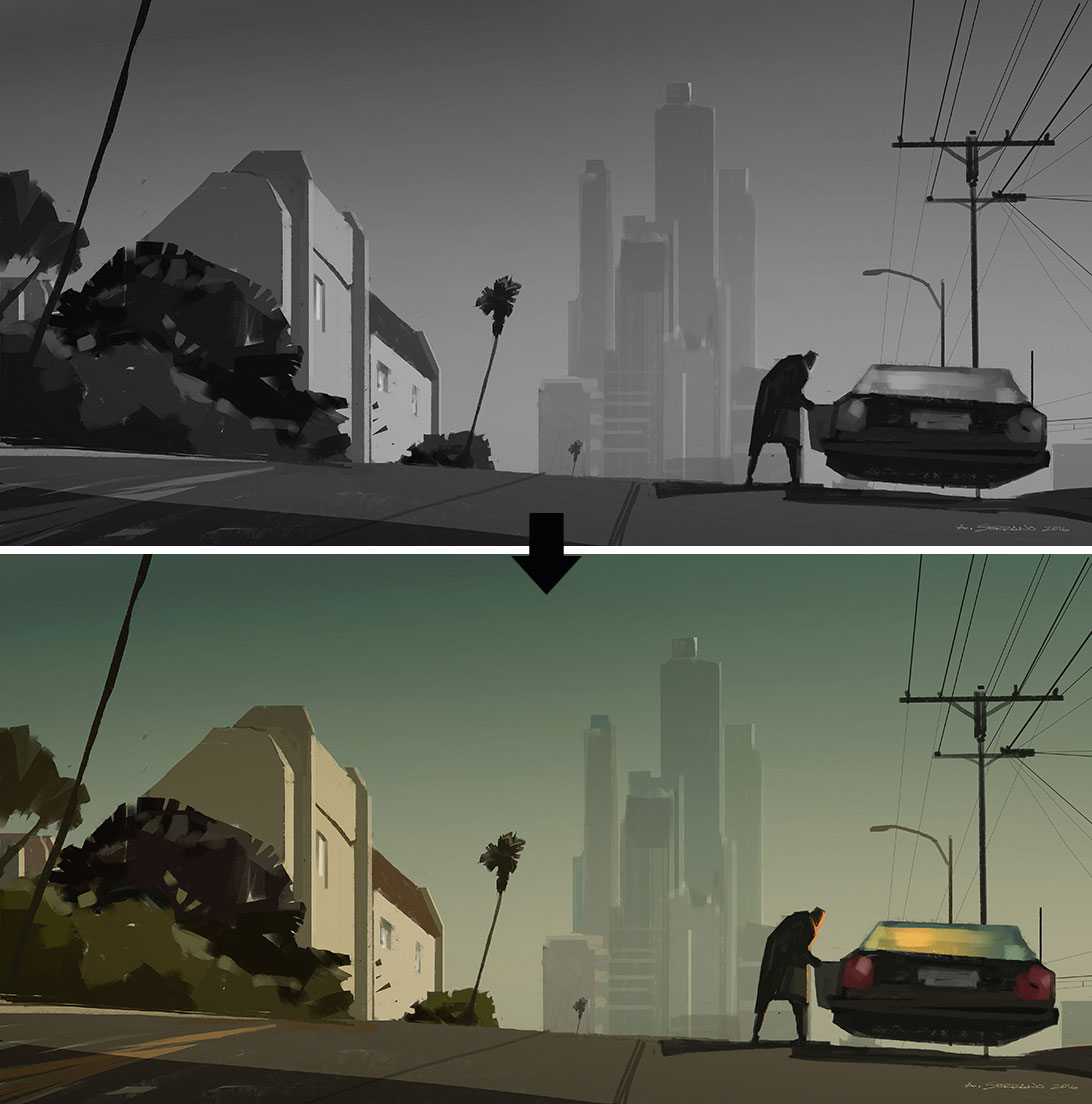
Value is the lightness or darkness of a colour. Every colour has a corresponding value and that lightness or darkness depends on the amount of lighting applied to the colour. The three important rules of value are:
- It controls focal points – usually the brightest area, the highest contrast, or when a predominant value encloses an opposite value
- Value gives the illusion of three-dimensional form, when it shows the surface being hit by light and the surface under the shadows
- Value creates the illusion of depth (altering the range of dark and light creates distance)
The perception of mood or emotion of the story being told in the canvas is established by the applied lighting translated into values. The success of colour composition depends on the value composition.
Next page: more concept tips

Thank you for reading 5 articles this month* Join now for unlimited access
Enjoy your first month for just £1 / $1 / €1
*Read 5 free articles per month without a subscription

Join now for unlimited access
Try first month for just £1 / $1 / €1
